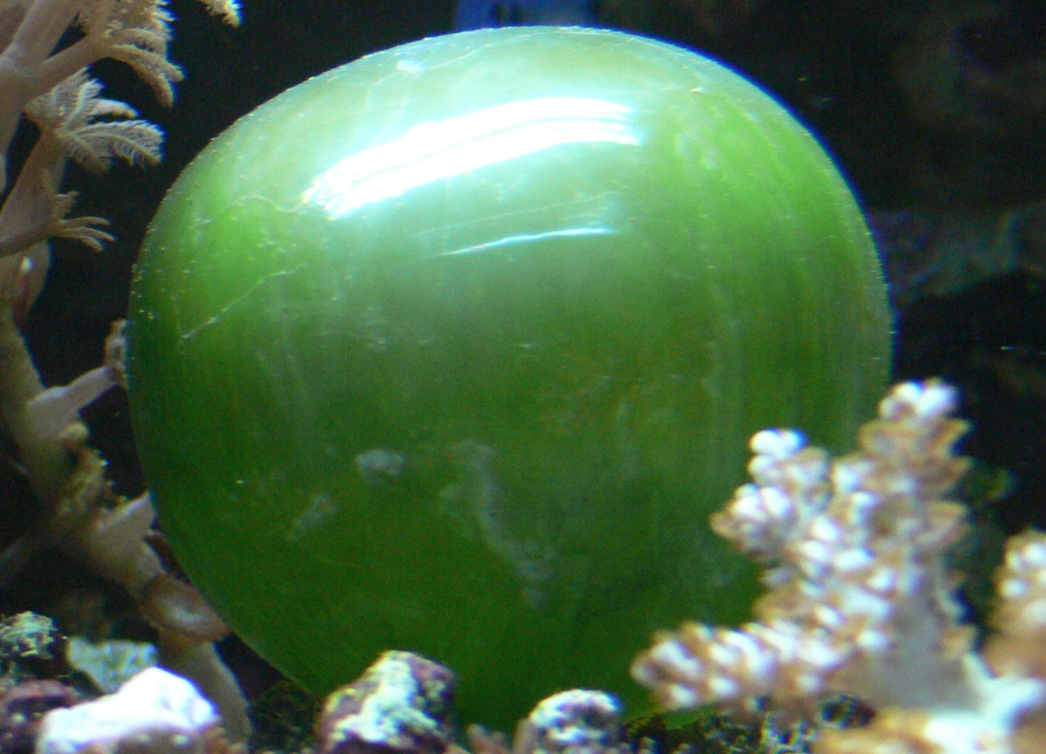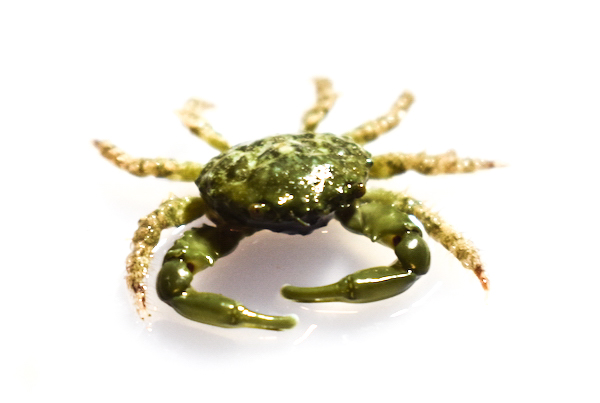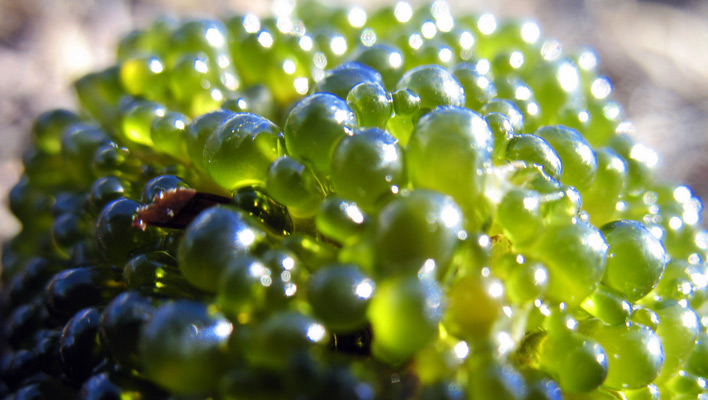Bubble algae is one of the most persistent pests of mature reef aquaria, overgrowing corals, weir combs, and wave pumps if left unchecked. Newbies often report surprise when they first find the small, bottle green, glassy balls as it’s something else that’s new and has appeared, that wasn’t there before. But it can seriously reduce the flow of wave makers when attached to the inlets and outlets, can block weirs, and even cause floods. It comes in with corals, will thrive in any saltwater conditions, and can plague reef aquaria. Bubble algae needs to be got rid of.

Eradication
The easiest way to remove Valonia is by prizing it away with your fingertips. If you’re lucky, large chunks can be removed at a time and disposed of. For those tucked away try tweezers, or a metal tooth scraper, then remove the free-floating bubbles ideally by way of a siphon, or a fish-catching net. Turn wave pumps off while you’re doing it as the bubbles will only float around and attach to the pump cage. Don’t worry about popping the bubbles as you remove them. They are unicellular algae cells, but popping them doesn’t release “spores” which go on to produce millions more. Scrub the rocks with a toothbrush if any burst remnants remain.

Natural control
Emerald crabs, Mithrax sculptus, are the most commonly prescribed treatment for bubble algae and we have used them and sold them over more than twenty years. Just like with hermits used for algae and Peppermint shrimp for Aiptasia however, a well-fed Emerald crab is less likely to want to eat Valonia versus the reef tank’s smorgasbord of omnivorous dining opportunities, so run a clean tank, and don’t overfeed your fish in an attempt to get the crabs to do what you purchased them to do and eat it.
Emerald crabs do eat Valonia and we have watched it up close ourselves many times. Mithrax have spoon-shaped claw tips but with razor edges, and instead of popping the valonia bubbles they grab and tear them. The more crabs you add, and the fewer other feeding opportunities you give them, the better they will be, and although they often disappear, the crabs just hide out and dine at night when no one is looking. Crabs are opportunists, however, and contributors on this platform have observed the odd-cheeky emerald grabbing at fish and turning on Zoas. Place a Valonia-covered rock into an Emerald crab-filled tank and they will attack it with gusto, but the bigger the tank, the fewer the crabs, and the greater the opportunity for some Valonia to always go unchecked.

Foxface for big tanks
If your tank is five feet long and holds 100 gallons or more, many reefkeepers report successful bubble algae control by way of the Foxface, Siganus vulpinis, and again, run a clean, tidy tank from day one with plenty of fish and invert grazers, use a toothbrush and a siphon, and Bubble algae outbreaks should be much less of a problem and far easier to control.



